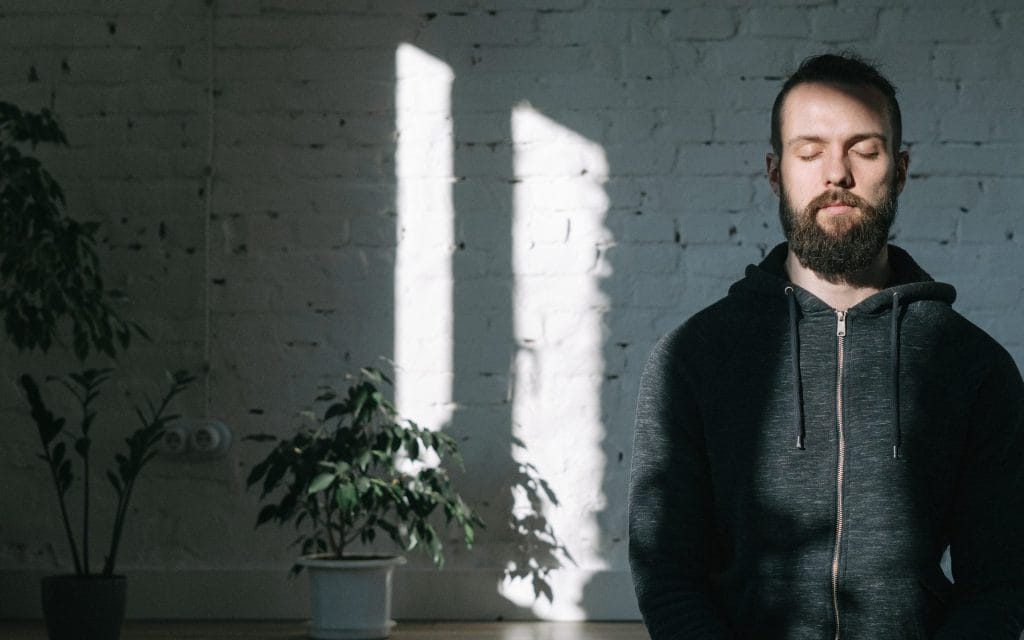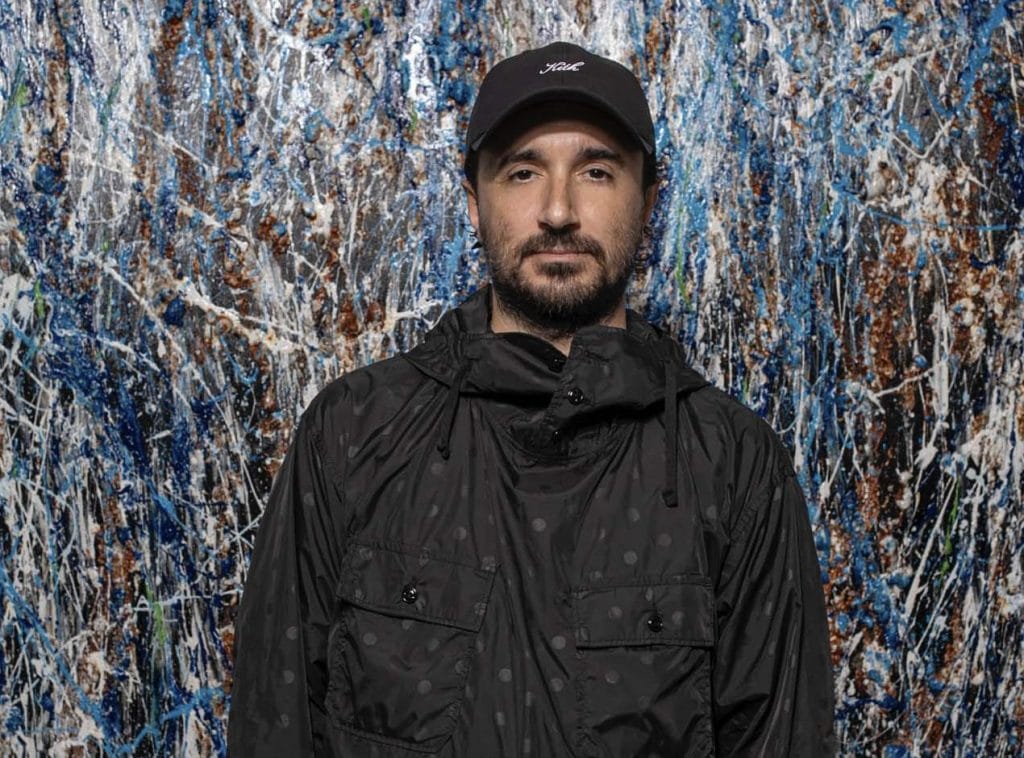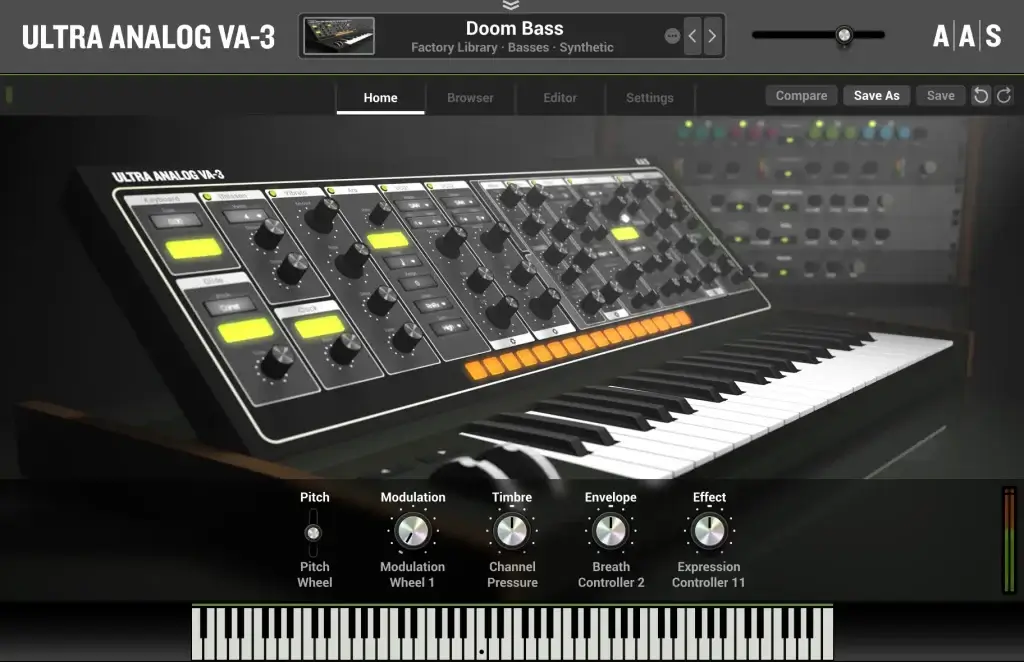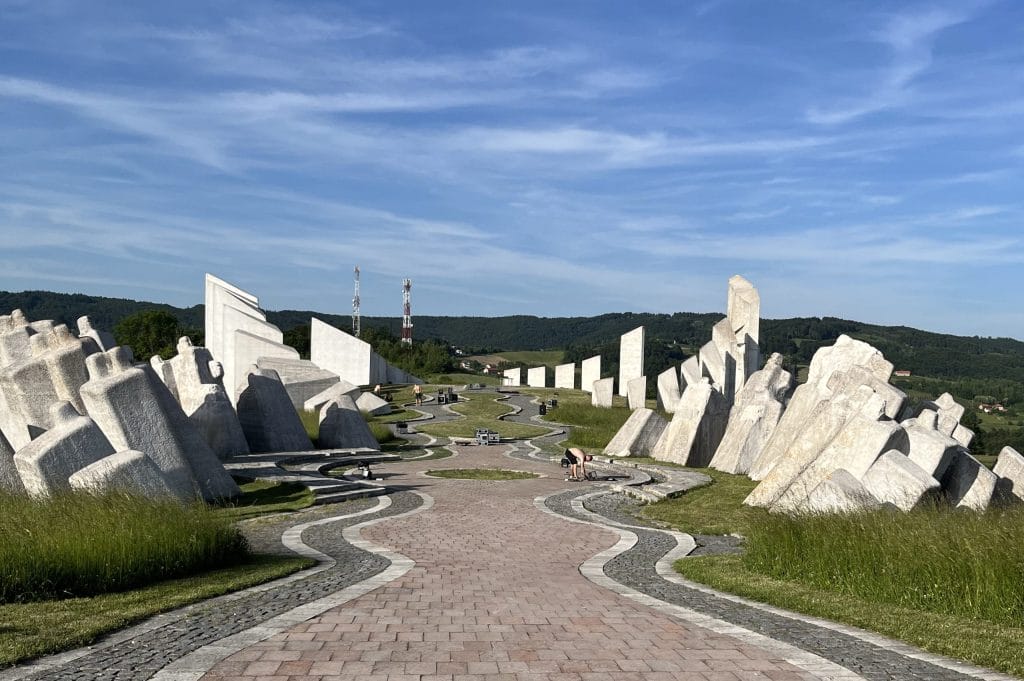There’s a level of pressure that comes with filming a live set at a war memorial with no power, no shelter, and no safety net—but UTOPIA make it look like second nature. For their latest hybrid live performance, the Serbian duo didn’t just pick a striking location. They committed to it, hauling a full analog and digital rig into the brutalist sprawl of Kadinjača and turning the site’s monumental stillness into a living part of the set. No crowd. No external PA. Just cold stone, sunrise light, and a sound system routed entirely through their own hands.
What follows is a breakdown of how that came together—not the polished recap, but the technical reality behind the power routing, vocal decisions, lighting design, and gear chain that made the performance possible. If you’re looking for a slick PR spin, that’s not what this is. This is how it was actually made—deadlines, team coordination, gear choices, and sleep-deprived problem-solving included. UTOPIA’s creative decisions weren’t driven by genre trends or social media bait—they were shaped by place, pressure, and preparation. And in their words below, it shows and we’re excited to open up the platform to allow the artists to share, in their own words, how it came together. So let’s let them take it from here…
The Location
Kadinjača Memorial Complex – Western Serbia
Kadinjača was not just a visually impressive location, but a symbolically powerful place that holds the memory of struggle and sacrifice. It was important to us that the location wasn’t treated as a simple backdrop—it needed to be an equal participant in the performance. The brutalist architecture, monumental atmosphere, and isolation from urban noise created the right conditions for an introspective yet powerful audiovisual experience. We’ve always been drawn to spaces with emotional weight, and Kadinjača offered exactly that.
The Technical and HYBRID Setup
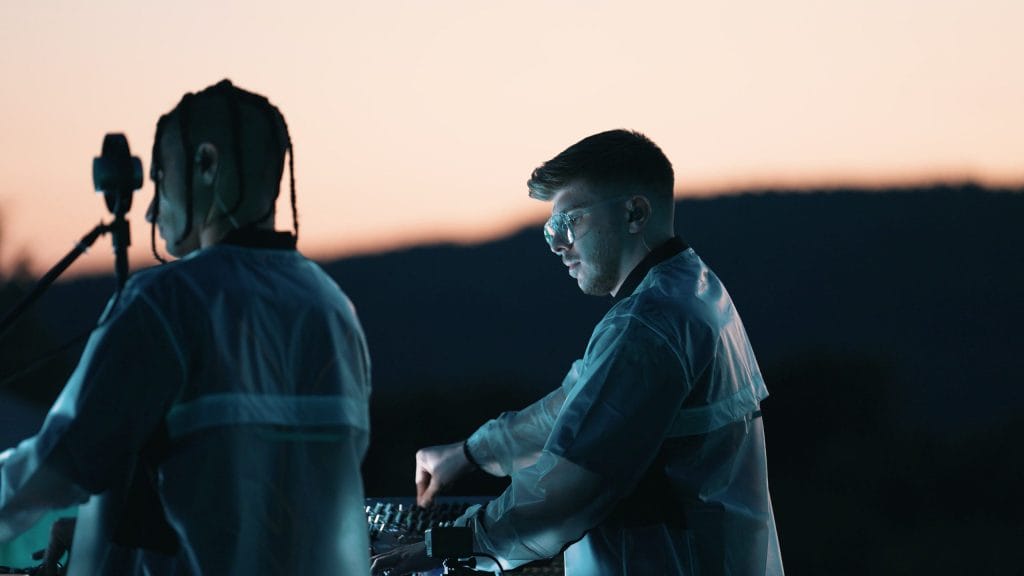
This was by far the most demanding shoot we’ve done: no electricity, no signal, no shelter. Everything had to be prepared in advance—power generators, wireless monitoring, mobile lighting, and team communication. The entire audio was routed through our HYBRID setup: analog synths, live vocals, drum machines, effects processors, and Ableton for sequences. Everything was connected in a way that allowed full real-time control.
We used the Korg Minilogue XD as our main synth, along with the Behringer Crave, which we mainly use for noise, arpeggiators, and short plucky tones. Everything ran through the Pioneer Toraiz SP-16, which triggered pre-prepared sequences via the Pioneer DJ PRO LINK system—keeping everything perfectly in sync. It also served as a performance pad for live freestyling.
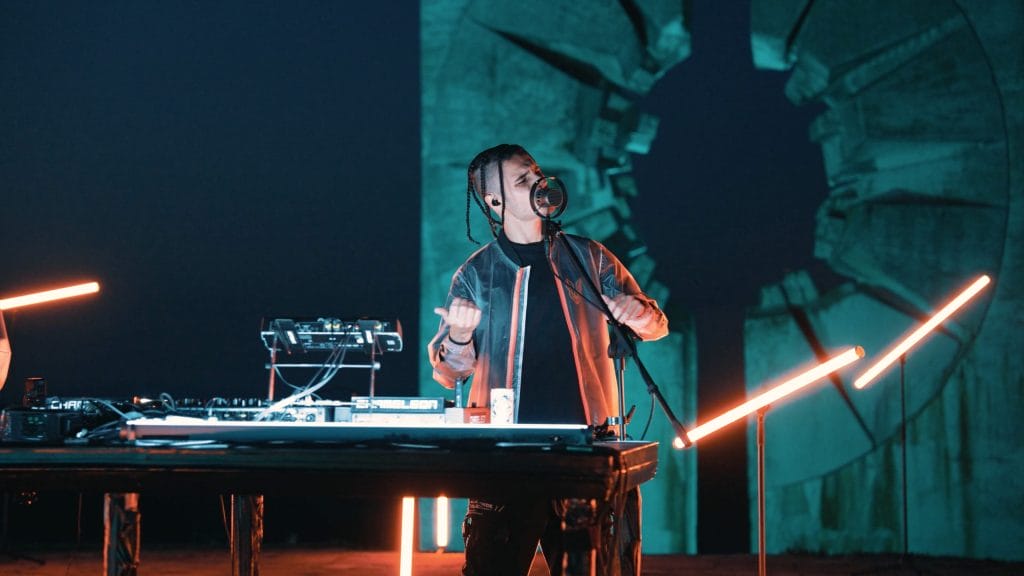
We mixed the tracks on CDJs without sync because we believe that brings more life and spontaneity to the HYBRID setup. We always use the Pioneer V10 mixer because it’s the only one that lets us connect all of this gear with the level of quality and comfort we need.
For vocals, we chose the CORONA microphone paired with a ZOOM vocal processor, which gave us studio-grade quality in a live setup. The mic also visually fit the aesthetic we were aiming for. To preserve the dignity of the memorial site, we used in-ear monitoring and avoided using an external sound system. That added a level of intimacy to the performance.
Visual & Light Direction
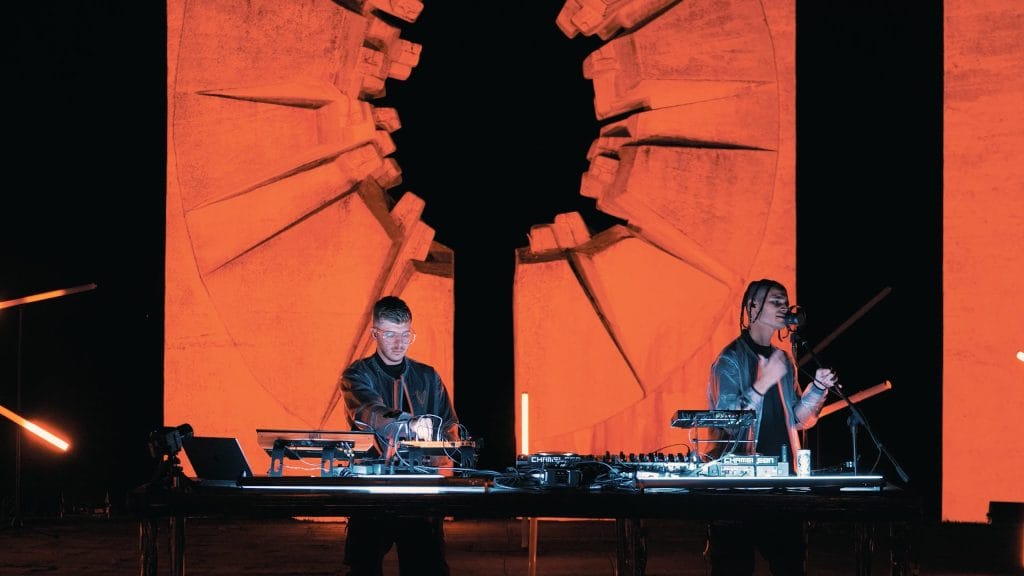
Lighting by CHAMELEON
Direction & Production by VIDDIM
The visual concept was developed alongside the audio. CHAMELEON designed programmed light sequences that matched the dynamics of the set without disturbing the authenticity of the space. The lights followed the rhythm and natural light cycle, as we timed the set to begin in complete darkness and gradually transition into sunlight—letting nature paint the final frames in the colors of UTOPIA.
We usually start with an idea during location scouting, but the real direction happens once setup begins. When night falls and the lights go up, the space starts communicating what it wants. Each performance brings more gear, more collaborators, and more refinement to the process. VIDDIM captured the whole thing with their usual sensitivity and visual intuition.
Creative Process
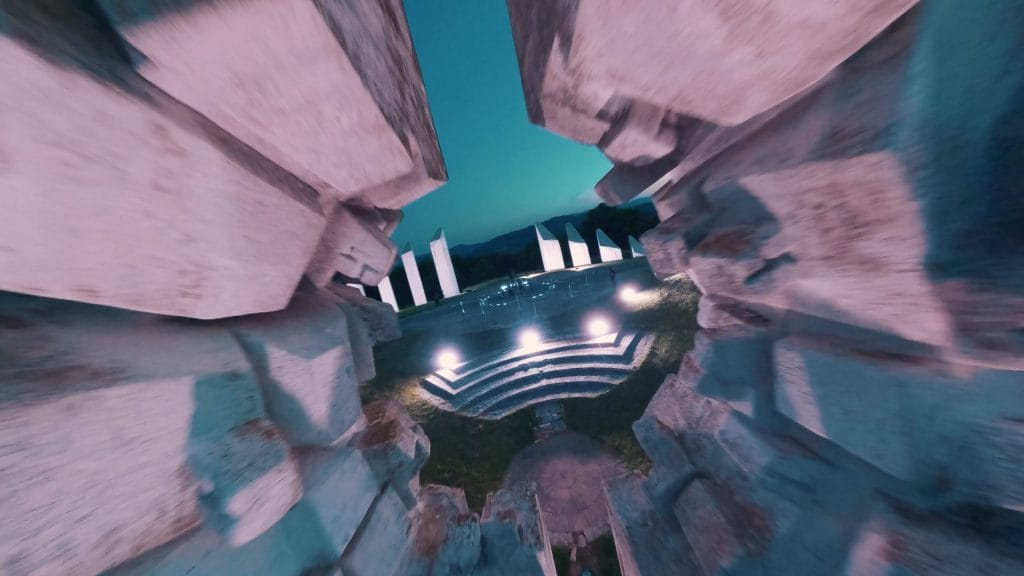
The set wasn’t fully programmed. Most of the structure—especially the vocal parts—was mapped out, but we left space to improvise with the synths in real time. That flexibility is what defines HYBRID Live. In the studio, we had a clear emotional vision for the end result. For this one, we included more vocals than usual because we noticed how strongly people connect with them during live shows.
We also pay close attention to the tracklist and transitions. It’s important for us to keep the listener engaged all the way through while maintaining harmonic flow. We usually build the set energy step-by-step, both rhythmically and harmonically, using harmonic mixing as our baseline approach.
Challenges & Lessons Learned
- Biggest challenge: Sleep deprivation. We aim to complete setup, testing, and lighting all in one day, and shoot at sunrise the next morning. That means working non-stop for nearly 24 hours to avoid disrupting visitors or holding the space too long.
- Key lesson: The more you plan, the more room you have to be creative. Something always goes sideways, but proper prep prevents the predictable mistakes.
- Biggest “wow” moment: Watching the sun rise in perfect UTOPIA color timing, hitting exactly as we imagined.
- Priceless: The energy of the team—from music to logistics. That shared momentum is what makes shoots like this possible.
Quick Fire Tips For Shooting a Live Set on Location
- The location has to give you butterflies—don’t settle for aesthetics alone.
- Preparation is everything. On shoot day, you should be 100% focused on performance.
- Lack of comfort forces creativity. Limitations are where new ideas start.
- Respect the space. Let the environment speak—don’t overpower it.
- If lighting is part of your story, treat it as seriously as the music.
The post How It Was Made: UTOPIA – HYBRID Live at Kadinjača appeared first on Magnetic Magazine.



